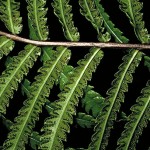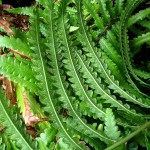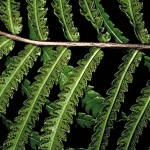Species: Cyclosorus interruptus
English Name: Willdenow’s maiden fern
Chinese Name: 間斷毛蕨、毛蕨
Family: Thelypteridaceae
Description:
This creeping fern with harsh, hairless olive green fronds reaches up to 1m height. Its rhizome is creeping, tup to 4mm in diameter.
It is found throughout Asia, South Africa, Australia, New Zealand and Hawai, on the vicinity of freshwater swamps, on grassy barks along streams and on open marshy areas.
It is known to have antimicrobial and growth promoting properties.



References:
– Department of Gardens and Green Areas, Civic and Municipal Affairs Bureau of Macao Special Administrative Region, South China Botanical Garden, Chinese Academy of Science 2005. Flora of Macao (Volume 1). Macao, SAR: Author

